January 2005
Sunday 2 -Tuesday 4 January. A visit to Weston sewage works allowed me to see the RICHARD'S PIPIT, although I obtained only a brief flight view and identified the bird by call and size. A black-necked grebe, short-eared owl and jack snipe were also present. My birthday treat was 2 days birding in Norfolk, the first time I'd been to the north coast there in 25 years. Highlights at Titchwell included ARCTIC REDPOLL, 2 MEALY REDPOLLS, and Sammy the BLACK-WINGED STILT (who unfortunately seems to have died in May 2005). An excellent variety of waders was present, including spotted redshank and avocets. Offshore, there were common scoter, red-breasted merganser, eider, and 2 red-throated divers flew past. The flock of dark-bellied brent geese included 2 birds of the American subspecies, black brant. There is a fantastic variety of farmland birds in the area - lots of grey and red-legged partridges, thousands of pink-footed geese, and one Egyptian goose in the fields. During my trip I saw 3 barn owls, 1 buzzard, and just missed a rough-legged buzzard that roosted near Wighton.
Sammy the stilt walked down a drainage channel, and posed in the sunlight at close range.
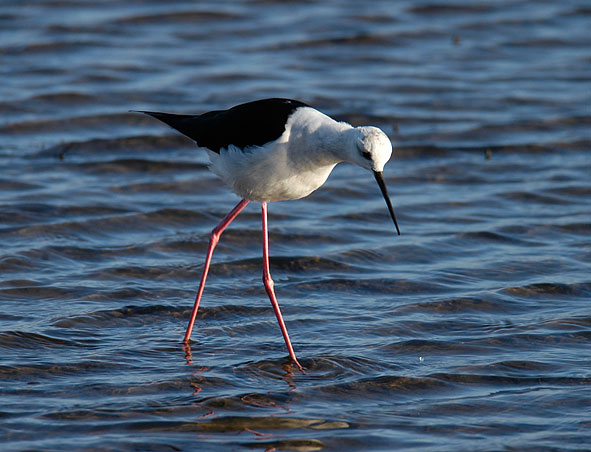
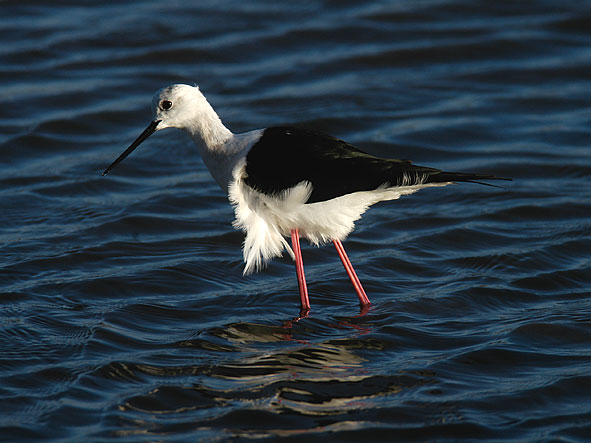
The birds at Holkham included large flocks of geese - mainly pinkfeet, but some dark-bellied brents and European white-fronts. An adult Bewick's swan sat alone in a field. At Holkham gap there was a wonderful flock of about 120 snow buntings, and 29 SHORE LARKS.

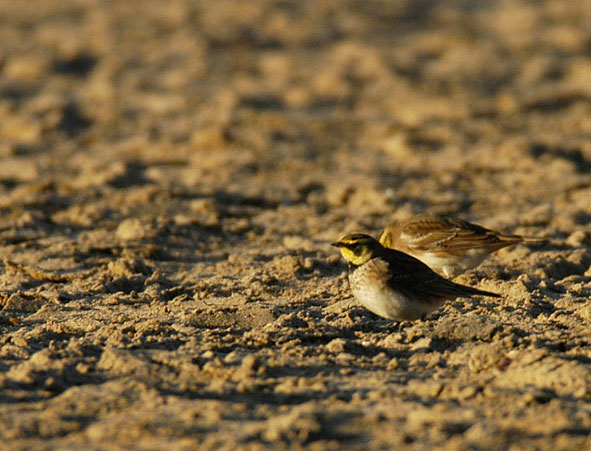
On 3rd January I saw 3 COMMON CRANES near Horsey Mill, marsh harriers and a ringtail hen harrier at Hickling Broad, and then headed for Cantley to see the TAIGA BEAN GEESE (below) in the Yare Valley. Despite the poor light, I had good views of up to 60 of these birds, and at least 5 European white fronts were also present. The Taiga bean geese are quite different in structure from Tundra bean geese - the bill is longer and contains more orange, and the neck is longer. In combination with the smaller head, this gives an almost swan-like appearance at times.

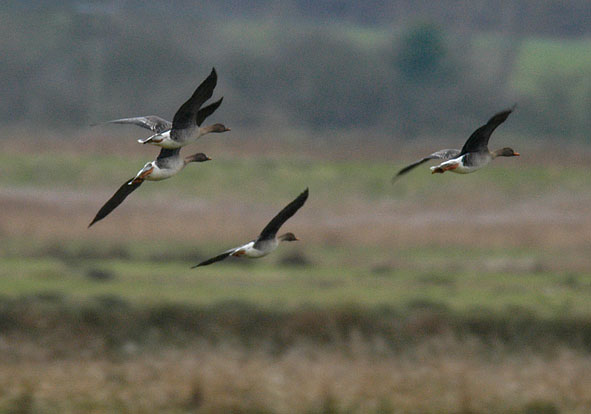
On the return journey I saw a short-eared owl and a group of whooper swans near Welney.
On 4 January a cattle egret was first seen close to Channel View Farm near Clevedon. I took the photos below on 7 January. The cattle egret can be distinguished from the little egret (top photo, right) by its yellow bill, and lack of yellow feet. Both characters can be seen on these photos. Note the different head shape also.
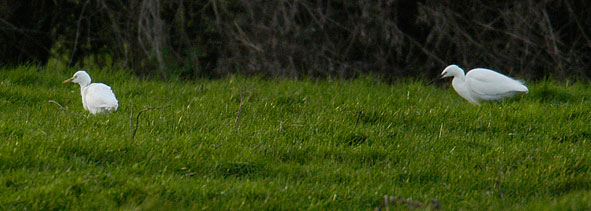
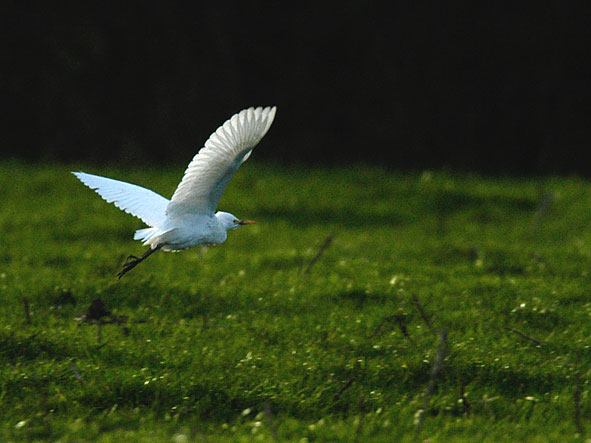
Mid-month highlights included seeing a male PINE BUNTING in a field near Wadborough, Worcestershire. After arriving at 11.00h, I saw the bird for a few seconds before it hid for the rest of the morning. I saw 2 little owls at dawn in Flax Bourton while dog-walking. I then enjoyed the waxwing invasion in Bristol - saw 25 at Easton behind a 'Desperate Housewives' poster on 19th (the flock later reached 160). Seven were seen at my daughter's school in Long Ashton on 20th, and a group frequented Brandon Hill at the same time. The birds below were photographed on 21st. Waxwings have been moving steadily south through the country over winter, arriving in good numbers in the Bristol area by mid January. The birds' ability to find isolated berry bushes is astounding. I also saw 3 waxwings in Flax Bourton on 23rd January.
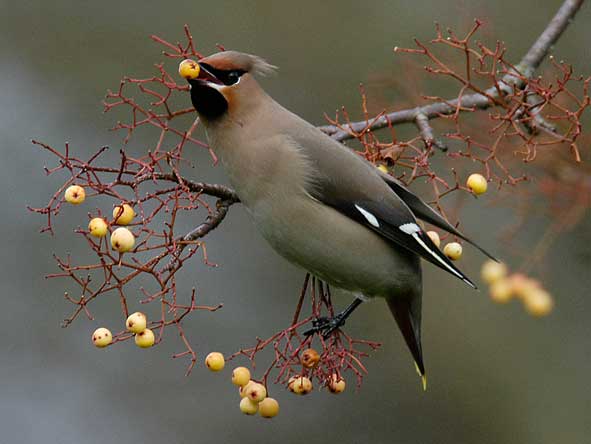
Mid-month, I photographed 2 purple sandpipers at Battery Point, Portishead.
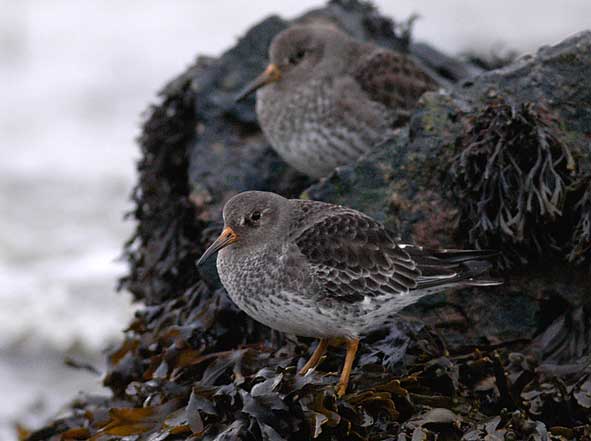
A trip to the Somerset Levels on 29th January produced 2 mobile tundra bean geese and a male marsh harrier at Ham Wall (all located later on Shapwick Heath), a firecrest that flew from Ashcott corner towards Ham wall, a female/immature merlin at Catcott lows, and hundreds of thousands of starlings at Westhay in the evening, including one leucistic bird.










